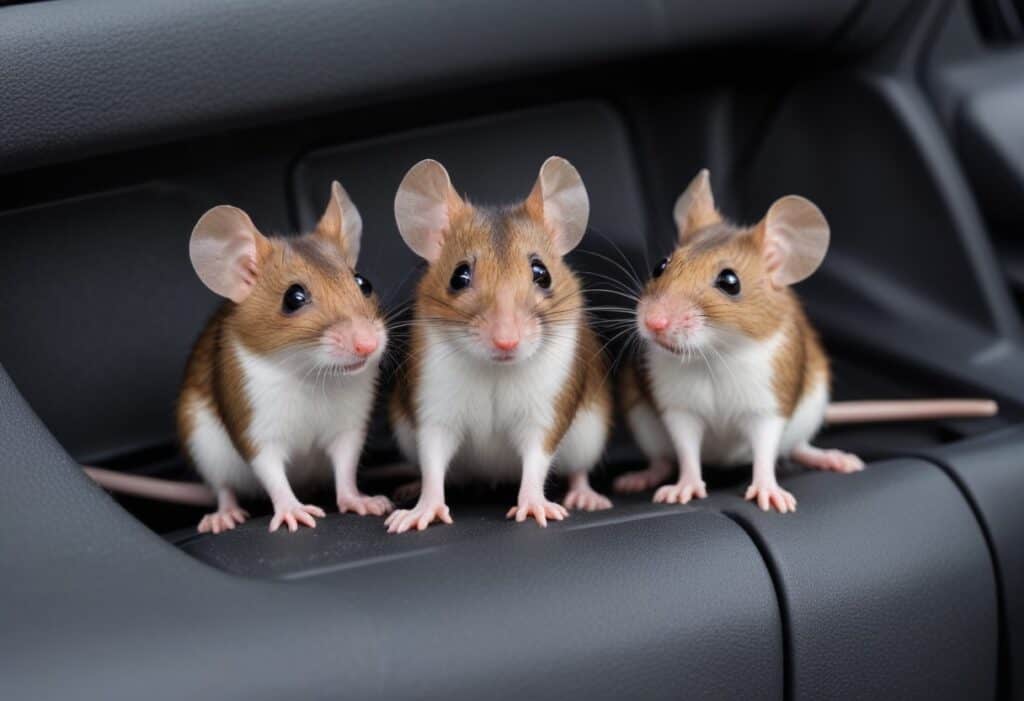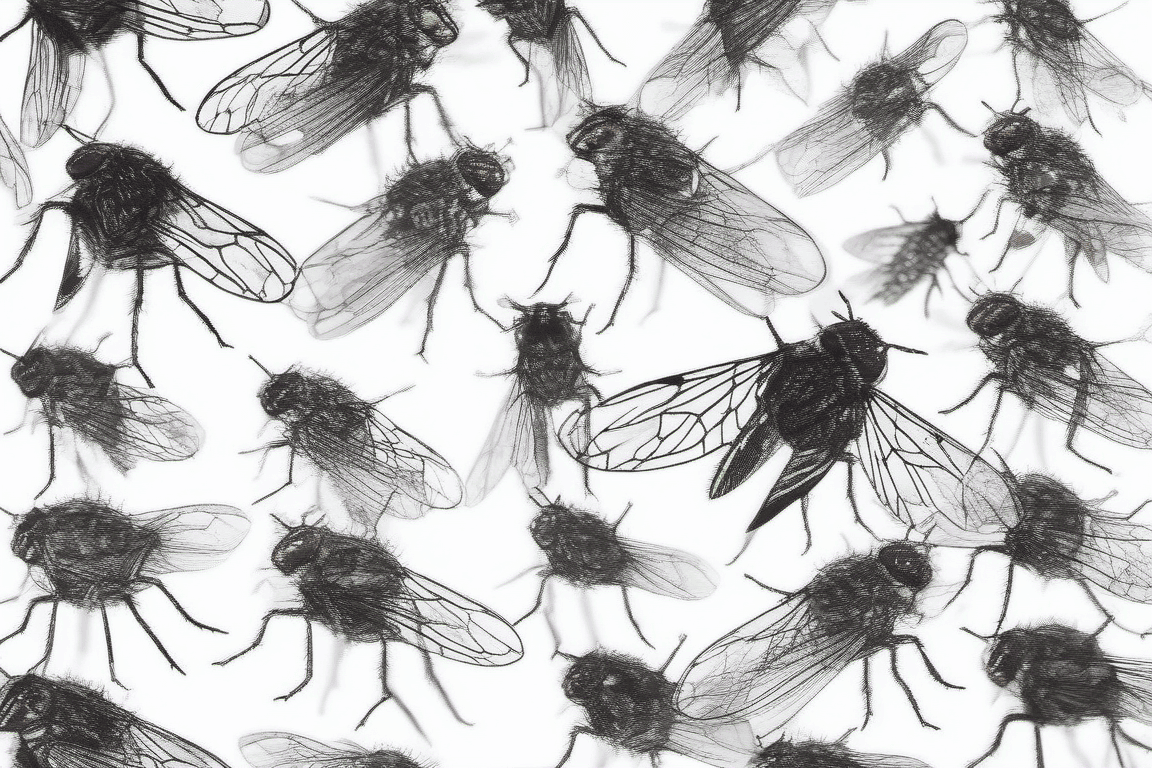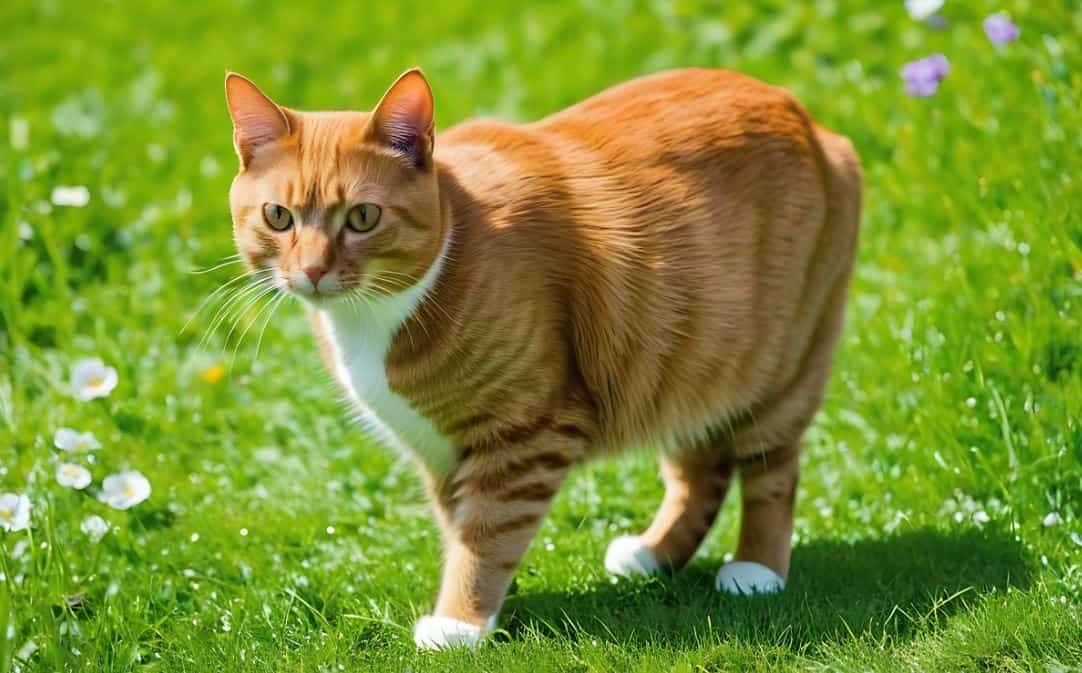Mice can squeeze through a hole the size of a dime.
That’s right, these tiny trespassers can turn your car into their creepy condo!
But fear not, car owners! If you share your ride with unwanted fuzzy passengers, this article is your guide to keeping mice out.
We will dismantle the five-star rodent hotel your car might have accidentally become, tackling everything from eliminating secret snacks to sealing up those dime-sized highway entrances mice love to exploit.
We will also share ingenious methods to deter these tiny titans, using scents they despise and natural repellents that are safe for you and your car.
So, buckle up and get ready to reclaim your vehicle. If you want to say goodbye to unwanted guests and hello to a mouse-free ride, stay tuned!
Table of Contents
What are Mice?
Mice are small rodents with a distinctive physical appearance that varies depending on the species.
Generally, mice have round bodies covered in fur, long tails, and small ears. They come in various colors, such as brown, grey, and white, blending into different environments.
Despite their tiny size (typically around 2-4 inches long), mice are agile creatures famous for their quick movements and ability to squeeze through openings as small as a pencil.
They are very active creatures, especially during the night when they prefer to forage for food. These nocturnal animals are skilled climbers and often scurry along walls or wires.
Due to their keen sense of smell and hearing, mice possess remarkable abilities to detect predators and locate food sources.
Besides, mice exhibit sociable behaviors within their colonies but can also display territorial tendencies towards other rodents or humans invading their space.
So, how do you eliminate mice from your car?
1. Declutter and clean your car
If you’ve had the unpleasant surprise of finding mouse droppings or damage in your car, it’s time to declutter and clean up.
Start by removing any food wrappers, crumbs, and clutter that may attract rodents. Vacuum the interior thoroughly, paying attention to crevices where crumbs can hide.
Regularly cleaning and organizing your car can prevent pest problems and create a more pleasant driving environment. Next, focus on disinfecting high-touch areas such as the steering wheel, door handles, and gear shift.
Use a mild soap solution or disinfectant wipes to remove dirt and germs that can accumulate over time.
Don’t forget to clean the exterior of your car – bird droppings and pollen can attract pests as well. Keeping your car clean is not just about aesthetics; it’s also about maintaining a healthy and pest-free environment for you and your passengers.
Regular cleaning habits enable you to enjoy a fresh-smelling and critter-free vehicle all year round.
2. Remove food sources
It’s crucial to eliminate any potential food sources that may attract mice to keep them out of your car.
It implies taking extra care to clean up crumbs or spills inside your vehicle and storing snacks or groceries in airtight containers to prevent easy access for rodents.
Remove trash from your car – even the tiniest food remnants can draw mice into your vehicle.
Furthermore, mind where you park your car to avoid areas with high bird feeders or overflowing garbage cans that might lure mice seeking an easy meal.
Additionally, be cautious while eating in your car as leftover food wrappers or containers are enticing baits for hungry rodents.
Ridding your car of all possible food sources will significantly reduce the chances of attracting unwanted furry passengers and help maintain a rodent-free environment for safe driving experiences.
3. Apply peppermint oil using cotton balls
Peppermint oil is a natural and effective solution to keep mice out of your car.
The scent of peppermint repels rodents, making it an excellent deterrent for those pesky critters looking for a cozy spot in your vehicle.
Soak a few cotton balls in peppermint oil and place them strategically around your car’s interior, focusing on areas where mice enter or nest.
The key to success with this method is to regularly refresh the peppermint oil on the cotton balls every few weeks or when the scent starts to fade.
It ensures that the deterrent remains potent and keeps mice at bay.
Additionally, consider combining this approach with other preventive measures, such as keeping your car clean and free of food crumbs and storing potential attractants like birdseed or pet food in secure containers.
Using peppermint oil in your rodent prevention strategy can protect your car from unwelcome guests while enjoying the fresh and pleasant aroma it brings along.

4. Sealing entry points
When keeping mice out of your car, one crucial step is sealing off all possible entry points.
Mice are skilled at squeezing through even the tiniest openings, so it’s essential to be thorough in your inspection.
Check for gaps around windows, doors, and other openings where a mouse could sneak in. Use weather-stripping or sealant to close up these spaces and prevent unwanted pests from gaining access.
Another often overlooked entry point for mice is the air intake vents of your car.
These vents can provide an easy pathway for rodents to enter and build nests within your vehicle.
Add a mesh cover over the vents or apply a specially designed rodent-proofing material to keep them out.
Addressing these potential entry points will significantly reduce the chances of having unwelcome passengers making a home in your car.
5. Use sticky traps
Another excellent method to keep mice out of your car is using sticky traps.
These traps are easy to set up and can help capture mice hiding in your vehicle.
Place the sticky trap in areas where you suspect mice activity, such as near the seats or under the dashboard.
Sticky traps are non-toxic and safe to use in enclosed spaces like cars, making them a practical solution for rodent control. Additionally, they provide a visual indicator of any mouse infestation, allowing you to take action promptly.
Incorporating sticky traps as part of your prevention strategy can prevent mice from accessing your car and avoid potential damage from these unwanted guests.
6. Remove foliage around your car
Removing foliage around your car is crucial in keeping mice at bay.
Mice are attracted to hiding spots like bushes and tall grass, providing easy access to your vehicle.
Clear the area around your car to eliminate potential nesting sites for these pests. Removing foliage also enhances visibility and accessibility around your vehicle.
It can deter mice and other unwanted creatures from seeking shelter near or inside your car.
Maintaining the surroundings of your parking space can significantly reduce the chances of encountering an infestation and protect your vehicle from damage or unpleasant surprises.
7. Don’t allow moisture to build up in or around your vehicle
Moisture is a silent enemy that can wreak havoc on your vehicle in ways you may not even realize.
The build-up of moisture in and around your car creates the perfect conditions for rust to take hold and spread like wildfire, causing extensive damage to metal components over time.
Additionally, excess moisture can lead to mold and mildew growth in the interior, compromising air quality and creating an environment for mice.
But it’s not just the exterior of your car that suffers from moisture build-up – electronics and wiring systems are also at risk.
Excessive moisture can cause corrosion in electrical connections, leading to malfunctioning features or even total system failure.
8. Sprinkle Western Red cedar chips
Western Red cedar chips can help keep mice away. Rodents hate the natural oils in red cedar chips as they find it repulsive.
Place sachets of cedar chips around your car or sprinkle them to create a barrier that mice will avoid. This simple solution is potent and adds a touch of rustic charm to your vehicle.
The fresh scent of Western Red cedar can help mask lingering odors in your car, creating a more pleasant driving experience.
Embrace the power of nature’s remedies, like cedar chips, to keep pests at bay.
Conclusion
Keeping mice out of your car requires proactive measures and regular maintenance.
Sealing entry points, removing potential food sources, and utilizing repellents can create a less inviting environment for these pesky rodents.
Check under the hood and inside the cabin periodically to ensure no unwanted guests have taken residence. With a little effort and vigilance, you can keep your car mouse-free and avoid costly damage or surprises.
Next time you park your car, don’t forget to take these preventive steps – because nobody wants their ride turning into a rodent resort!











